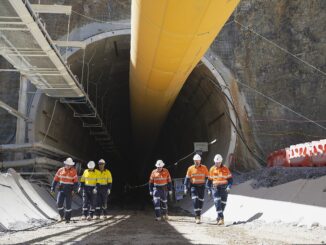
Does evidence of past extreme floods invalidate claims that climate change is making floods worse?
Picture of tree at centre of furious flood debate
A seemingly simple picture of a tree in regional Australia has sparked a furious climate change debate.
Staff writerNovember 26, 2022 – 3:40PM
A picture of a tree in regional South Australia has sparked a wild climate change debate.
…
Well above the current flood level is a marking from 1956.
For some, it was a smoking gun that climate change isn’t real.
“And the climate change back in 1956 was caused by what?” one person joked.
“I wonder if they were talking climate change in 73, 74 and 75,” another added.
Others pointed out an obvious issue.
“How tall was that tree in 1956?” one person questioned.
…
As Australia continues to suffer a year of devastating floods, Climate alarmists are moving to take advantage. Flannery’s Climate Council is leading the pack, pushing the narrative that climate change is responsible for more floods – which is hilarious, given a few years ago Climate Council founder Tim Flannery was pushing the narrative that we had entered a period of endless drought. “… even the rain that falls isn’t actually going to fill our dams and our river systems …” – remember saying that, Tim?
At the center of this debate is the embarrassing evidence that past floods were worse than recent floods.
Some alarmists appear to be claiming markers on South Australia’s “Tree of Knowledge” have moved due to tree growth, disputing evidence that past floods were worse. But there are plenty of inanimate historic flood markers, which appear to confirm that tree growth alone cannot account for past flood markers being higher. For example, the markers on a heritage riverfront building in the Queensland town of Maryborough (see top of page) show a spectacular flood in 1893, which far exceeds any modern floods in the region.
Having said that, we cannot conclude whether climate change is influencing Aussie floods based on this evidence, because that would be comparing apples to oranges. Since 1893 there have been substantial waterworks – irrigation channels, reservoirs and flood mitigation measures – on flood prone rivers which run through inhabited areas of Australia.
What about more scientific measurements?
The following is a slide from Professor Andy Pitman’s presentation in 2019. Pitman is Professor of Climate Extremes at the University of New South Wales. Pitman appeared to admit climate science doesn’t have a clue what CO2 is doing to long term flooding, if anything – though he later appeared to recant, alluding that climate change was making things worse in some indirect and unspecified fashion.
Could volcanic activity be a contributor to major floods in Australia? Australia is on the South Western edge of the Ring of Fire. While the Australian mainland is not very volcanically active, there have been some spectacular eruptions in our neighbourhood, such as the infamous Krakatoa eruption in 1883, or the 1815 Tambora Eruption, which is blamed for causing famine in the United States in 1816, “The Year Without a Summer”.
A notable volcanic eruption occurred at the start of 2022 – The Hunga Tonga eruption. JoNova published an intriguing comparison between the volcanic ash distribution from the Hunga Tonga eruption in January 2022, and 2022 rainfall anomalies across Australia. Hunga Tonga was light on sulphates, but the blast threw unprecedented amounts of water into the stratosphere. Where I live, on the Southern edge of the volcanic debris distribution, we’ve had some spectacular sunsets over the last year.
The apparent overlap between rainfall anomalies and volcanic debris could be a coincidence – but the comparison is visually intriguing.
2022 Rainfall anomaly vs Ash distribution from the Hunga Tonga volcano. Source JoNova. Note I created the animation, and stretched the rainfall map to try to match the geography of the ash map, so don’t blame JoNova for the imperfect fit.
So what can we conclude from all this? Unfortunately the answer is, not a lot.
I can’t tell you what climate change is or will do to rainfall in Australia. And going by Professor Pitman’s presentation, neither can anyone else. Though having said this, even detecting a significant change would be the real challenge, given the magnitude of Australia’s climate variability across a wide range of timescales.
Essay by Eric Worrall



